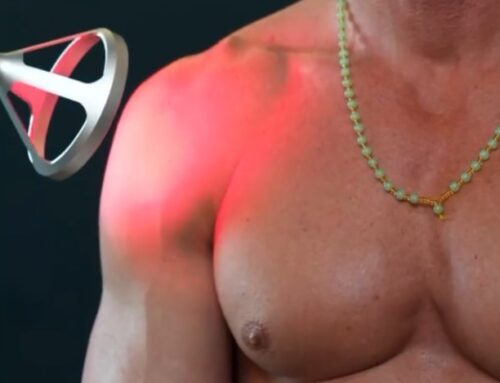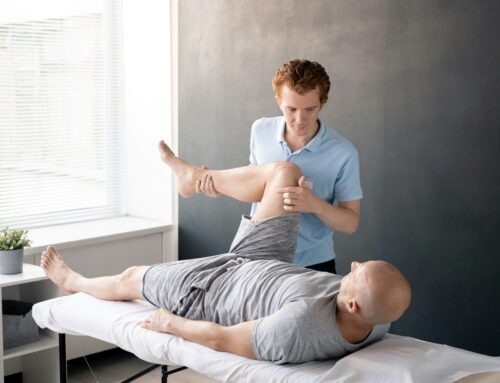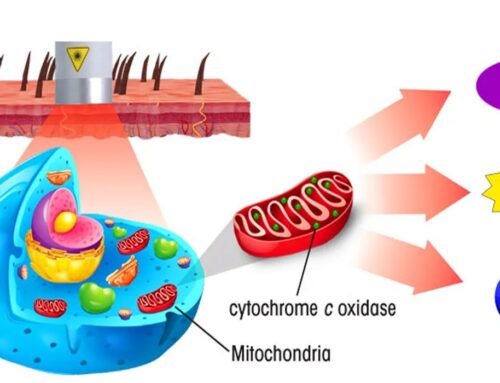In photomedicine, light energy is used to treat pain, reduce inflammation, and repair tissue. The two main benefits of high-powered laser therapy — also called High Intensity Laser Therapy (HILT) — that have made the treatment so popular with chiropractors and their patients are:
- Pain relief without prescription drugs
- Healing without surgery
Today’s Class IV high-powered laser therapy can often provide pain relief without resorting to orthopedic surgery when other nonsurgical treatments for musculoskeletal conditions have failed or underperformed.
The Science of High-Intensity Laser Therapy
Different therapeutic wavelengths affect tissues at varying depths. The outcomes of using Medray state-of-the-art medical technology for Class IV therapeutic laser treatment depend on the application of four specific wavelengths at the cellular level. The selected depth of interaction will accelerate metabolic actions inside the cells of that region, affecting the cell membrane and enabling an increased amount of nutrients to enter the cells.
Due to the increased transport volume, adenosine triphosphate (ATP) is stimulated by interactions via the body’s cytochrome c oxidase (CcO) enzymatic system. This facilitates the process of compounding cellular reactions, thereby advancing the healing process and reducing pain.
Levels of HILT Application
Medray laser pain therapy technology delivers an array of therapeutic power levels and wavelengths for specific areas of treatment and various depths of penetration into soft tissue, fat, fluids, or bone. Applying the appropriate power during treatment can produce particular therapeutic outcomes at the level of cellular healing needed for laser therapy pain relief and muscle repair.
| 650nm | This is Low Level Laser Therapy (LLLT), in the Class IIIb energy wavelength, used for photobiomodulation — a treatment using near-infrared (NIR) to help regenerate and preserve tissue and cells. |
| 810nm | The conversion of ATP through molecular oxygen has the highest saturation using this wavelength. The greater oxygen saturation enables deeper penetration, impacting more cellular activity. |
| 915nm | This wavelength causes a faster discharge of oxygen in the blood. The increase of oxygen to the cells enables more robust healing. At this wavelength, Hemoglobin optimizes oxygen (fuel) delivery to cells. |
| 980nm | Oxygen uses H20 as its transportation system in the body. Water also carries waste. At this wavelength, laser photons are absorbed and converted to heat. This facilitates development of a controlled thermal environment, in which effects include critical microcirculation and O2 transport to cells. |
How is the HILT Pain Treatment Process Performed?
The laser light therapy method is under study as a primary approach to the treatment of arthritis and tendonitis, healing sprains, and relief from numerous other acute and chronic health conditions. A class IV laser device is used to provide laser therapy for pain management by the concentrated application of light energy to targeted body tissues.
This non-surgical treatment process works to regenerate DNA and stimulate cell activity to accelerate healing:
- The laser light is applied using long, smooth motions for some minutes to provide sufficient energy to structures beneath the skin layers and stimulate photobiomodulation.
- The light penetrates the skin layers and reaches the target depths in the muscle or bone, subcutaneous fat, tendon sheath, or other area receiving treatment.
- After the laser application, the skin above the treated area may be vaguely red, but that can be expected to disappear within a few hours.
- Some patients have reported a temporary increase in their pain, but this also stops soon after treatment. The final result is frequently significant relief from — or even the elimination of — the formerly persistent pain.
Why Class IV Lasers are Superior in Results
Producing many multiples of the wattage enables the Class IV therapeutic laser to execute much more manageable penetration to the required depth for effective treatment. That means the far greater power of the Class IV laser light treatment device can provide much faster treatment and accelerated healing times for patients. By contrast, a Class IIIb laser takes approximately 20X longer to deliver the same amount of laser energy.
There has been controversy among professionals in the field about the greater power of Class IV vs. the much lower maximum output of Class IIIb laser pain treatment units. However, there is a consensus that all treatment providers need a range of power delivery options, from the least to the most penetrating laser energy application options to treat the full spectrum of patients’ individual therapeutic needs.
Laser diodes are designed to receive specified power levels. So, some older and/or less advanced treatment devices are, by design, only capable of comparatively low power output, whereas newer models can provide the maximum power delivery for the greater depth necessary to target for cellular regeneration in many cases.
For clinical applications, administering laser energy at the average power level can be the most beneficial to many patients. Generally speaking, photochemical alterations occur when the required volume of energy is reached in the laser application. Typically, nanosecond-pulse lasers of the Class IIIb devices generate energy volumes that are much too low to generate photochemical changes.
Medray Laser & Technology
Medray is a nationally trusted producer of laser treatment equipment for pain relief muscle repair therapy, as well as other state-of-the-art technologies and methods to help improve results and reduce recovery time for patients.
Contact Medray Laser & Technology to learn more about our Class IV laser therapy devices.






